Commerce Exam > Commerce Notes > Business Studies (BST) Class 12 > Cheat Sheet: Business Environment
Cheat Sheet: Business Environment | Business Studies (BST) Class 12 - Commerce PDF Download
Business environment refers to the forces, individuals, and institutions that influence an organisation's operations. It encompasses external factors that impact business decisions and performance.
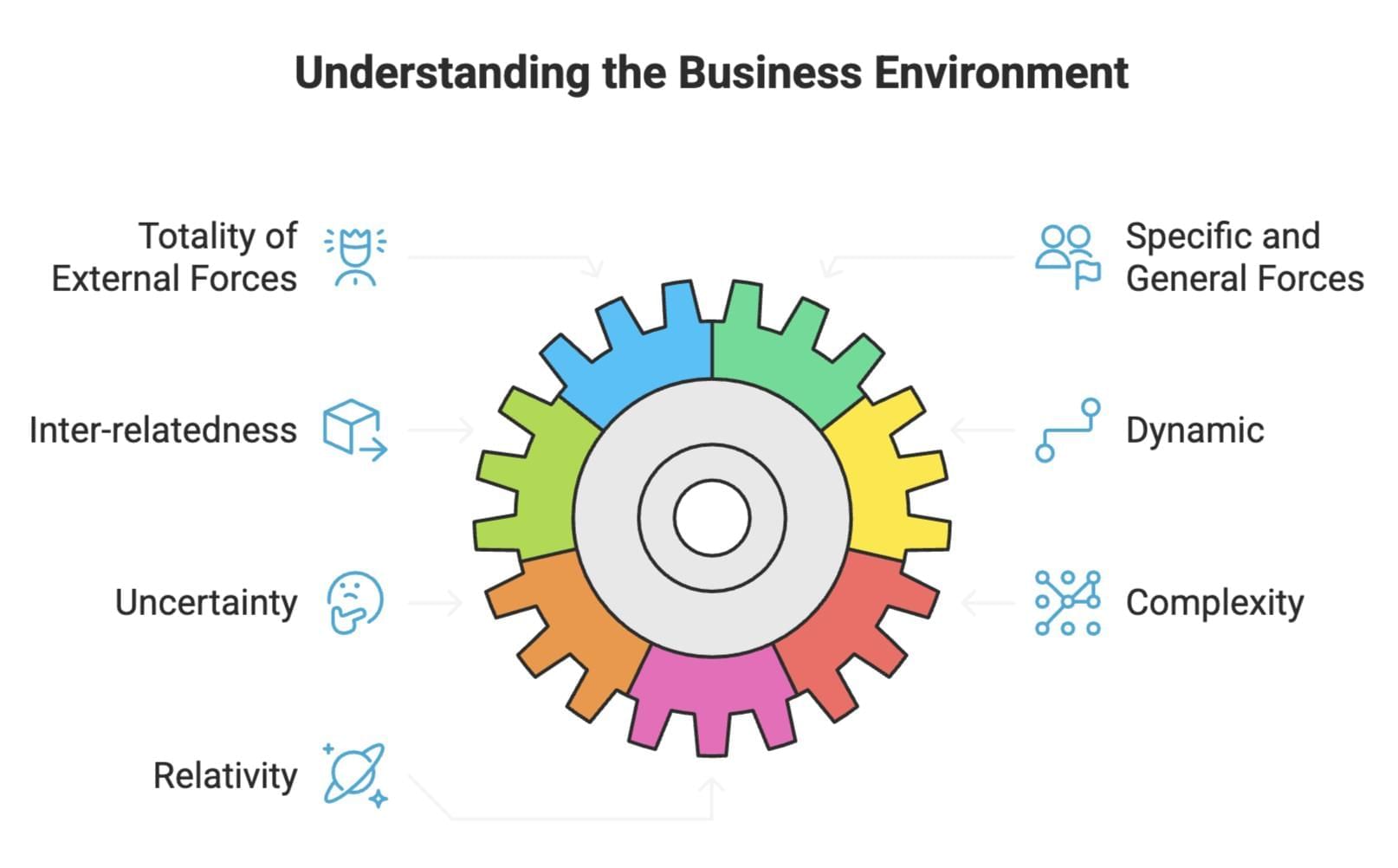
Features of Business Environment
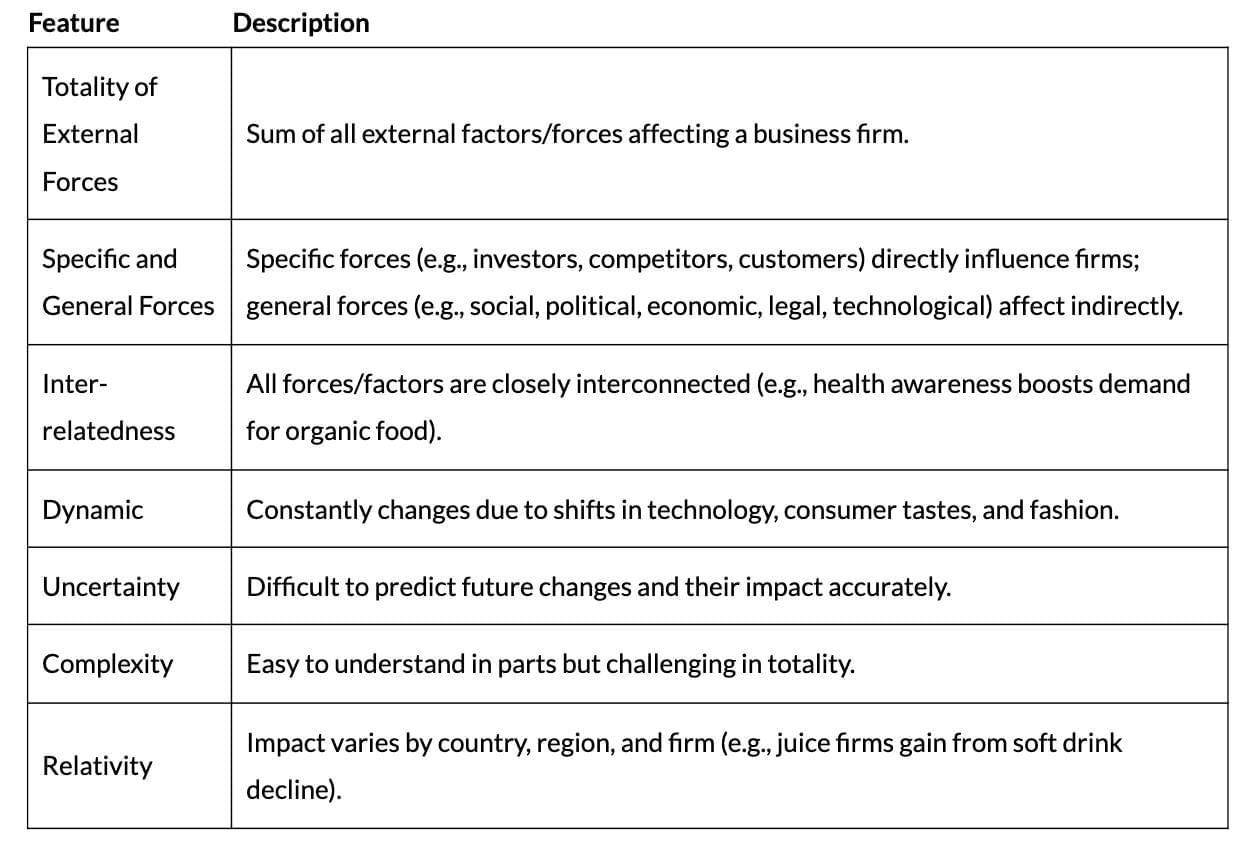
Importance of Business Environment
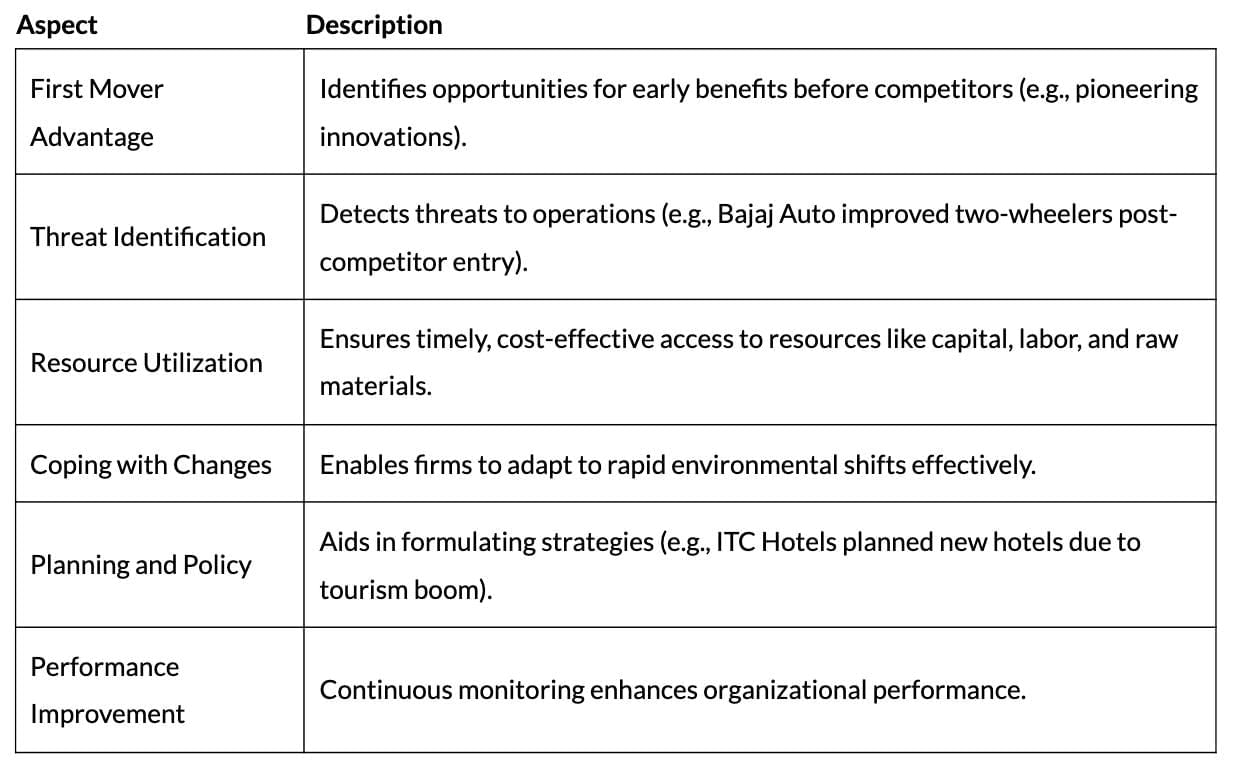
Economic Environment in India
The Government of India introduced the New Economic Policy (NEP) in July 1991 to address economic challenges and accelerate development, focusing on Liberalisation, Privatisation, and Globalisation.
Main Features of NEP, 1991
- Only six industries retained under licensing.
- Public sector role limited to four industries.
- Disinvestment in public sector enterprises.
- Liberalised foreign capital/investment, allowing 100% direct foreign investment in many sectors.
- Automatic permission for technology agreements with foreign companies.
- Establishment of Foreign Investment Promotion Board (FIPB) to boost foreign investment.
- Benefits offered to small-scale industries.
Objectives of NEP

Dimensions/Components of Business Environment
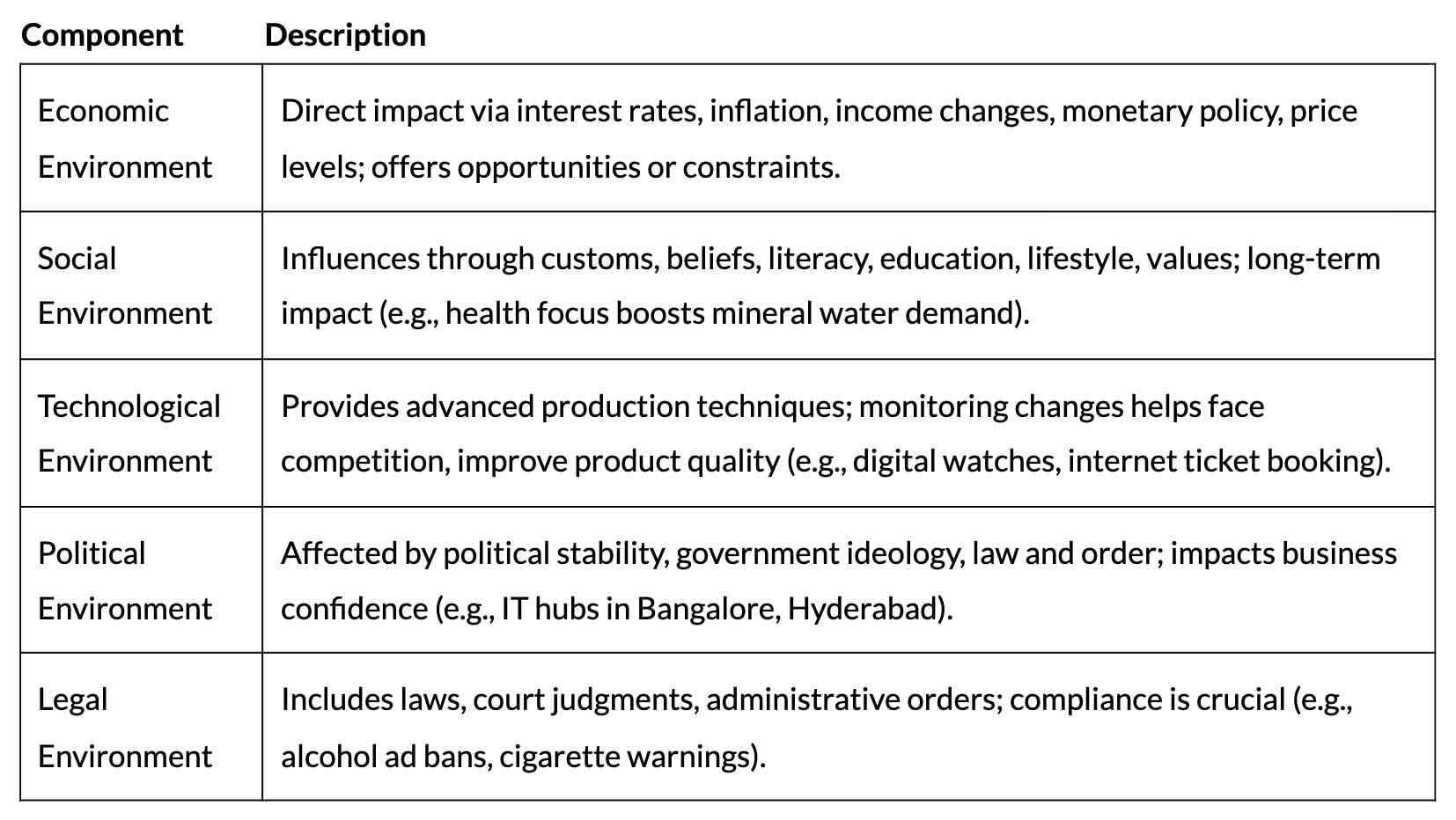
Major Steps in Economic Reforms
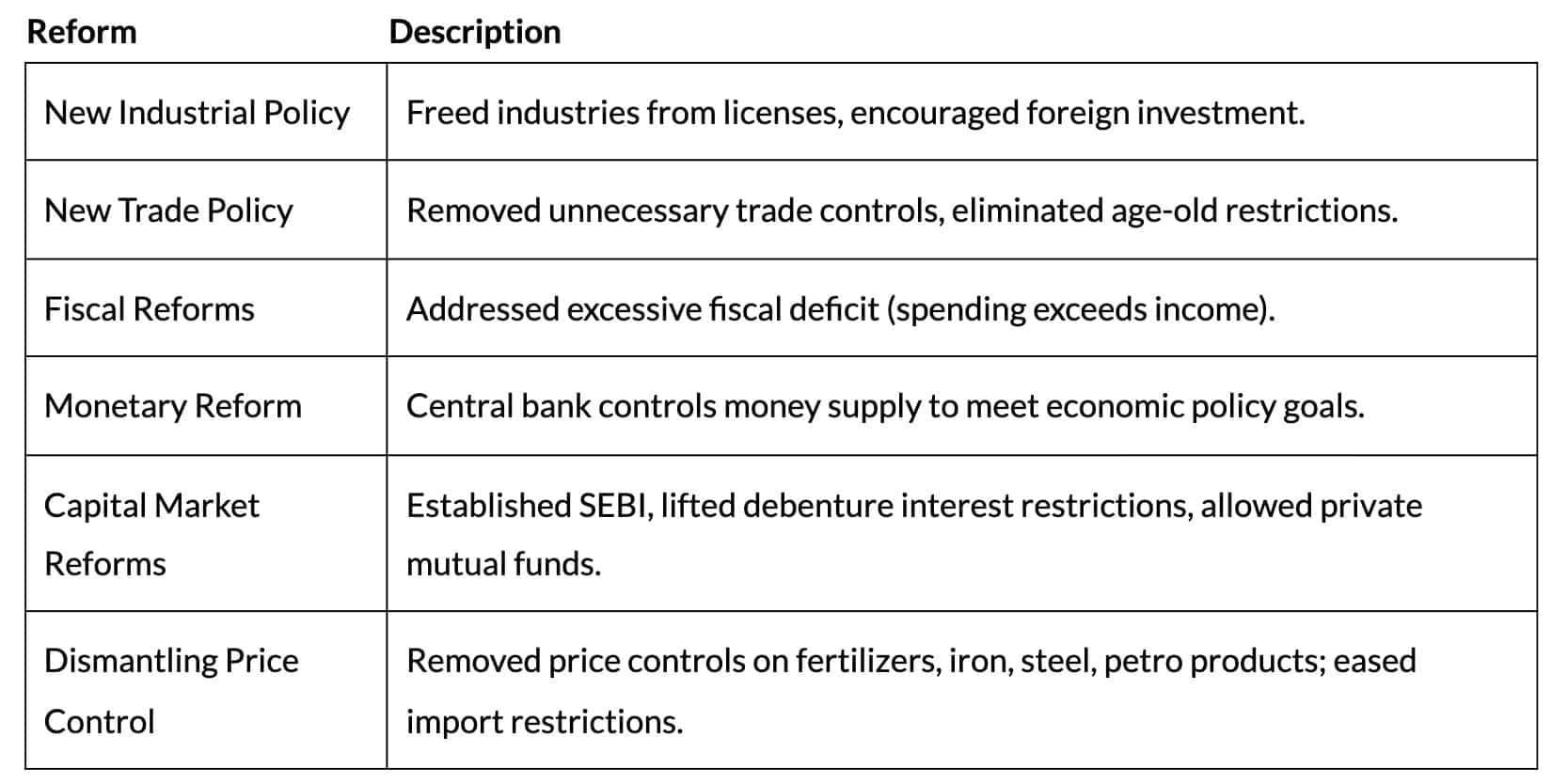
- Fiscal Deficit: Spending exceeds income.
- Gross Domestic Product (GDP): Total financial value of goods and services produced annually in a country.
Impact of Government Policy Changes on Business and Industry
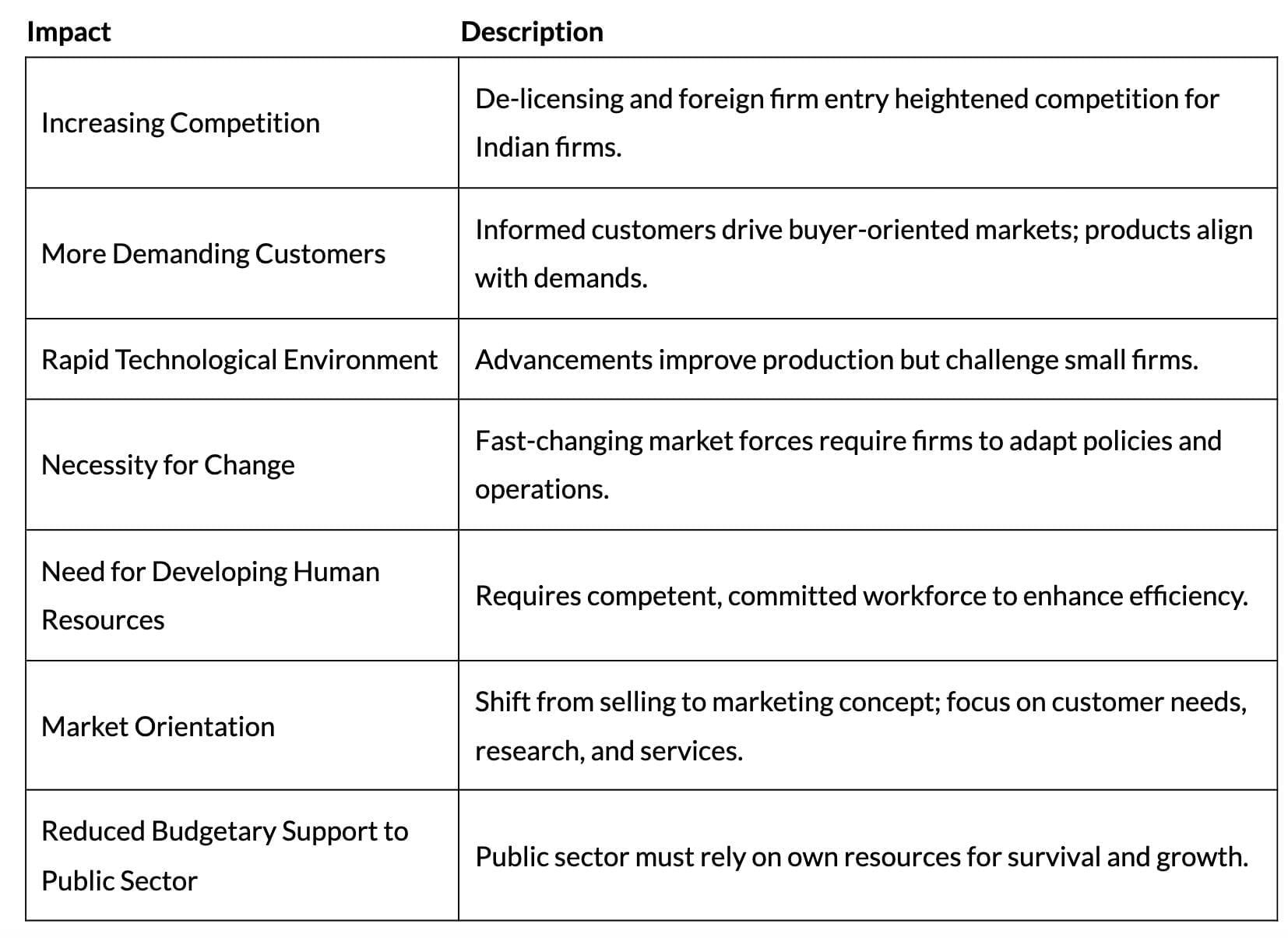
The document Cheat Sheet: Business Environment | Business Studies (BST) Class 12 - Commerce is a part of the Commerce Course Business Studies (BST) Class 12.
All you need of Commerce at this link: Commerce
|
51 videos|334 docs|74 tests
|
FAQs on Cheat Sheet: Business Environment - Business Studies (BST) Class 12 - Commerce
| 1. What are the key features of the business environment? |  |
Ans. The business environment encompasses various features, including its dynamic nature, the complexity of interrelated factors, and its influence on business operations. It is characterized by economic, social, legal, technological, and political components that affect decision-making processes. Additionally, the business environment is subject to constant changes, making adaptability crucial for organizations.
| 2. Why is understanding the business environment important for businesses? |  |
Ans. Understanding the business environment is essential for businesses as it helps them identify opportunities and threats, make informed strategic decisions, and maintain competitiveness. It allows organizations to anticipate changes in market conditions, customer preferences, and regulatory requirements, enabling them to adapt and innovate accordingly. Furthermore, a thorough grasp of the business environment aids in risk management and resource allocation.
| 3. What are the main components of the economic environment in India? |  |
Ans. The economic environment in India comprises several key components, including the overall economic structure, economic policies, the level of economic development, and economic indicators such as GDP growth rate, inflation, and employment levels. Additionally, it includes factors like fiscal and monetary policy, trade and investment climate, and the role of government in regulating the economy.
| 4. What were the major steps taken in economic reforms in India? |  |
Ans. Major steps in economic reforms in India include liberalization, privatization, and globalization initiatives initiated in the early 1990s. These reforms aimed to reduce government intervention in the economy, promote competition, encourage foreign investment, and enhance the efficiency of public sector enterprises. Key measures included deregulation of industries, reduction of tariffs, and the introduction of market-driven policies.
| 5. How do government policy changes impact business and industry? |  |
Ans. Government policy changes can significantly impact business and industry by altering the regulatory framework, affecting taxation, and influencing trade practices. Such changes can create new opportunities or pose challenges for businesses, prompting them to adjust their strategies. For instance, favorable policies can stimulate growth and investment, while stringent regulations can increase compliance costs and operational challenges. Businesses must stay informed and adapt to these changes to thrive in a competitive environment.
Related Searches
















